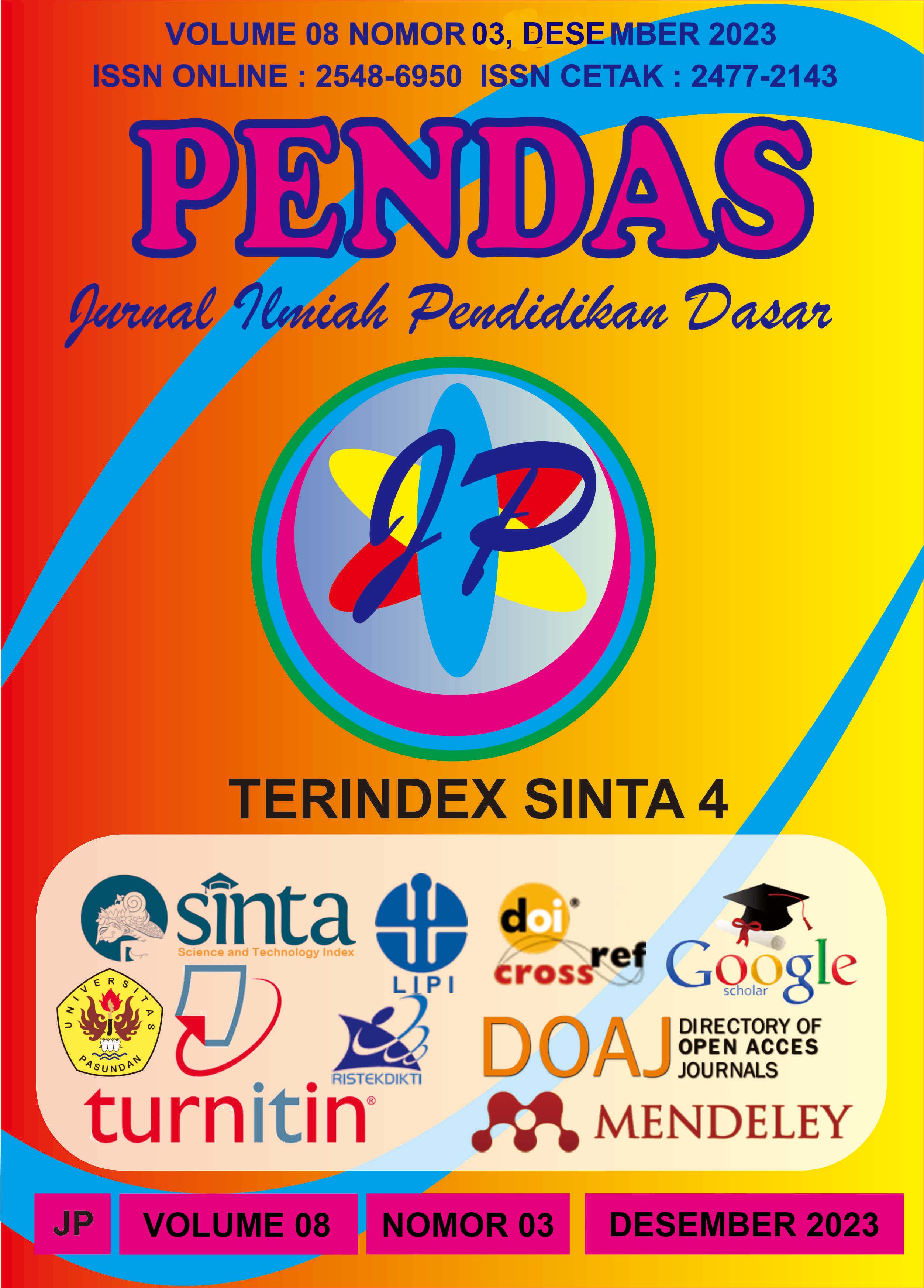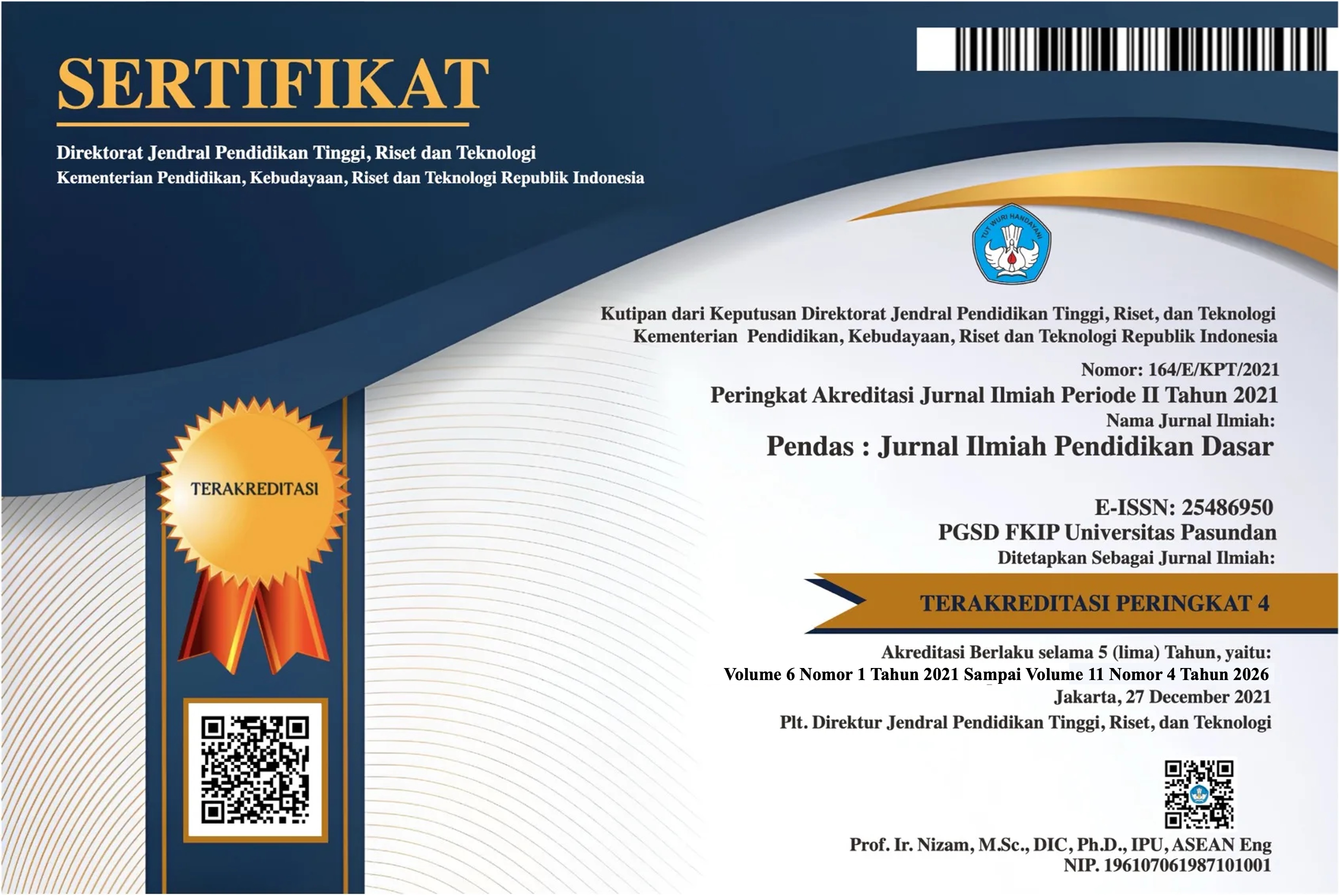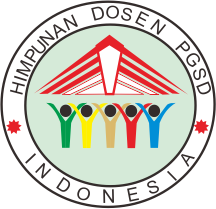PENGARUH PENGGUNAAN MEDIA AUDIOVISUAL DAN MINAT BELAJAR TERHADAP HASIL BELAJAR IPA KELAS VI SEKOLAH DASAR NEGERI 02 TRANS BATUMARTA IX OKU TIMUR, SUMATERA SELATAN
DOI:
https://doi.org/10.23969/jp.v8i3.10256Keywords:
The effect of using audiovisual media, learning interest, and science learning outcomesAbstract
This research was conducted with the aim of analyzing the effect of the use of audiovisual media and interest in learning on science learning outcomes for class VI SDN 02 Trans Batumarta IX, a total of 38 students. This study used a quasi-experimental approach with a 2 x 2 factorial design. Sampling was done using a saturated sample technique. Data collection techniques using interest in learning questionnaires and tests. Data analysis technique used descriptive analysis with two-way ANOVA technique and Tukey test. Based on the calculation results, it was found that there were significant differences in science learning outcomes between students who were taught using audiovisual media and those who were taught with conventional learning. There are differences in science learning outcomes between students who have a high learning interest and students who have a low learning interest. Science learning outcomes for students who have a high interest in learning are higher when taught using audiovisual media compared to using conventional learning. Science learning outcomes for students who have a low interest in learning are higher when taught with conventional learning compared to learning using audiovisual media. There is an interaction effect between the use of audiovisual media and students' learning interest on science learning outcomes.Downloads
References
Fathurohman, Pupuh, and Sobry Sutikno. 2010. Strategi Belajar Mengajar (Melalui Penanaman Konsep Umum Dan Konsep Islami). edited by M. R. Arken. Bandung: PT Refika Aditama.
Karnadi, K., K. Sasmita, B. Badrudin, E. Palenewen, and S. Solihin. 2021. “Diamond Touch ( DT ) Based on Hyperactive Game in Applying the Concept of Life Science in Early Childhood Education Diamond Touch ( DT ) Based on Hyperactive Game in Applying the Concept of Life Science in Early Childhood Education.” Journal of Physics: Conference Series 1760(012014):1–5. doi: 10.1088/1742-6596/1760/1/012014.
Rusydiyah, Fatimatur Evi. 2020. Problem Based Learning. Surabaya: Uin Sunan Ampel.
Sasmita, K., E. Palenewen, S. Solihin K Karnadi, and And Badrudin. 2021. “What ’ s App Integrity in the Life Science Concept during the Covid-19 Pandemic What ’ s App Integrity in the Life Science Concept during the Covid-19 Pandemic.” doi: 10.1088/1742-6596/1760/1/012028.
Solihin, S., and D. Dedah. 2022. “Analisis Intention to Act Dan Motivasi Belajar Siswa Pasca Praktikum Isolasi DNA Sederhana Menggunakan Alat Dan Bahan Dapur.” 7(2).
Solihin, Solihin, Diana Vivanti Sigit, and Mieke Miarsyah. 2020. “Relationship between Ecosystem Knowledge and Locus of Control with Intention to Act in MAN on Environment of Sukabumi District.” International Journal for Educational and Vocational Studies 2(4):1–5. doi: 10.29103/ijevs.v2i4.2529.
Yatimah, D., R. Puspitaningrum, Solihin S, and Adman. 2018. “Development of Instructional Media Environmental-Based Child Blood Type Detector Cardboard ( KAPODA ) Formal and Informal Education Development of Instructional Media Environmental-Based Child Blood Type Detector Cardboard ( KAPODA ) Formal and Informal E.” IOP Publishing 434(012236):1–6. doi: 10.1088/1757-899X/434/1/012236.
Downloads
Published
Issue
Section
License
Copyright (c) 2023 Pendas : Jurnal Ilmiah Pendidikan Dasar

This work is licensed under a Creative Commons Attribution 4.0 International License.



















